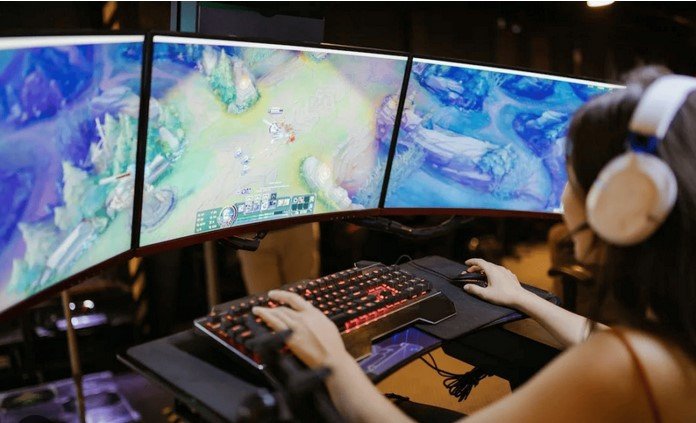Computer graphics play a pivotal role in the gaming industry. They enhance the visual appeal of video games and immerse players in rich, dynamic worlds. Thanks to advancements in computer graphics, game developers can create more realistic environments, characters, and experiences. In this post, we’ll explore how computer graphics enhance video games, improving gameplay and player engagement.

The Role of Computer Graphics in Video Games
Computer graphics are the backbone of any modern video game. They are responsible for creating the visuals players interact with. These graphics transform abstract ideas and designs into immersive 3D worlds, bringing characters and environments to life. Developers use a combination of 2D and 3D graphics to create both simple and complex visuals.
For example, 2D graphics are used for side-scrolling games and static elements like user interfaces, while 3D graphics form the game’s environments, characters, and animations. By combining both types, game developers can build an immersive and interactive world that players can explore and engage with.
Creating Realistic Worlds
One of the key ways computer graphics enhance video games is by creating realistic environments. Through techniques like texture mapping and shading, graphics allow games to simulate natural lighting, weather, and topography. This level of realism makes games more engaging and helps players feel like they’re part of the virtual world.
In games like The Witcher 3 or Red Dead Redemption 2, computer graphics simulate realistic landscapes, with grass, trees, mountains, and bodies of water that react to light changes, creating lifelike visuals. Realistic environments help players lose themselves in the game, enhancing their sense of immersion and engagement.
Lifelike Characters and Animations
Computer graphics also play a major role in creating lifelike characters and their animations. Thanks to motion capture and advanced 3D modeling, game developers can craft characters with realistic movements, facial expressions, and gestures. This adds depth to storytelling and makes the player’s interactions with characters feel more authentic.
In games like Uncharted or The Last of Us, the realistic character animations, combined with lifelike textures, make the player believe they’re interacting with a real person. The high level of detail in characters’ faces and movements adds emotional weight to the narrative and enhances the player’s connection to the story.
Enhancing Visual Effects
Visual effects are another crucial aspect of how computer graphics enhance video games. These effects help convey the scale and intensity of in-game events, such as explosions, weather changes, or magical spells. By creating realistic explosions, fire, smoke, and weather patterns, computer graphics elevate the intensity and excitement of gameplay.
In titles like Fortnite or Overwatch, effects like particle systems, lighting, and reflections work together to create dramatic moments. For instance, an explosion in a game can create a chain reaction of particles, debris, and lighting effects that heighten the sense of realism and excitement. These visual effects add to the overall impact of the game, making action sequences more thrilling and visually engaging.
Improving Gameplay Mechanics
Beyond enhancing visuals, computer graphics also improve gameplay mechanics. Graphics help visualize complex gameplay elements, such as maps, health bars, and in-game objectives, making it easier for players to navigate the game. Well-designed graphics can simplify game interfaces, helping players stay focused on the action.
In addition, graphical enhancements like high-resolution textures and smooth frame rates ensure that gameplay feels fluid and seamless. Games with high-quality graphics run smoother, reducing lag and enhancing the overall player experience. This improves not only the aesthetic value of a game but also the functional aspects that make gameplay enjoyable.
Conclusion
Computer graphics are crucial to the success of modern video games. They enhance the visual appeal, realism, and immersion of games, making them more enjoyable and engaging. From creating realistic worlds and lifelike characters to enhancing visual effects and gameplay mechanics, computer graphics elevate every aspect of the gaming experience. As technology continues to improve, the role of computer graphics will only grow, making video games even more visually stunning and immersive in the future.




